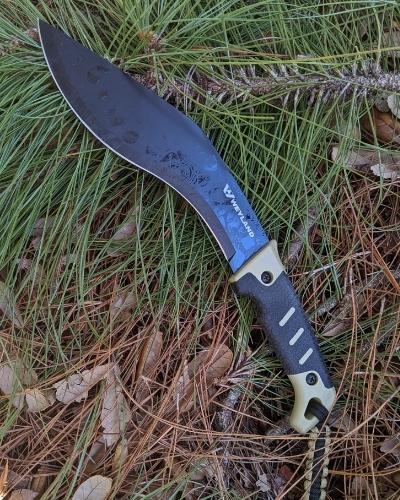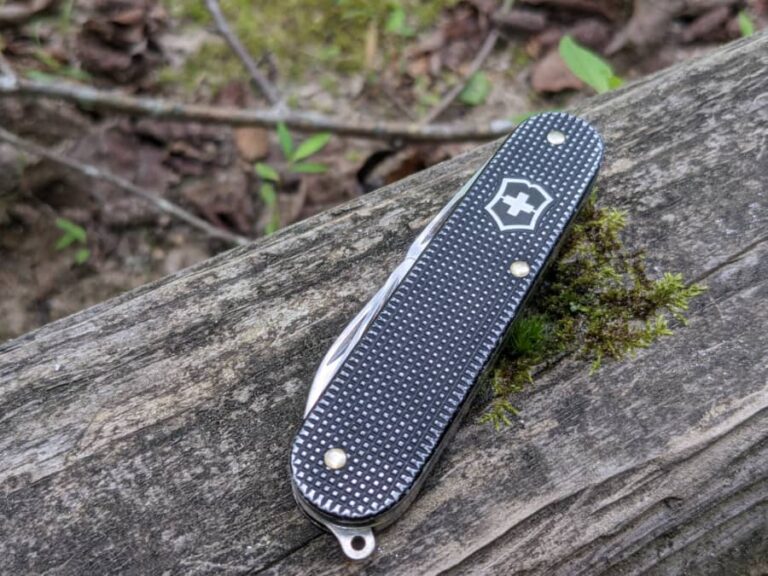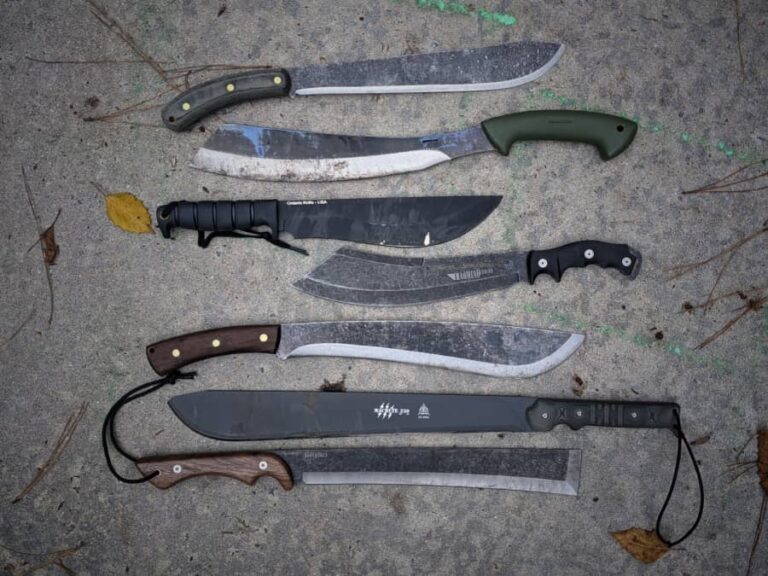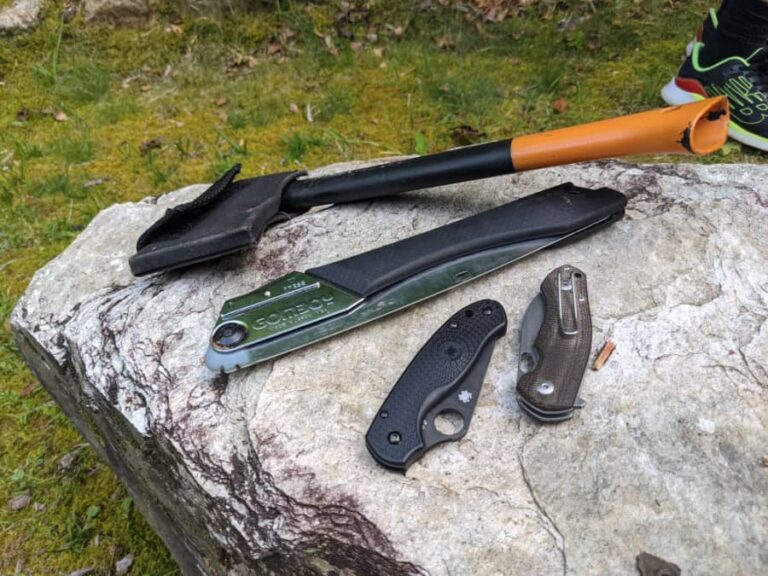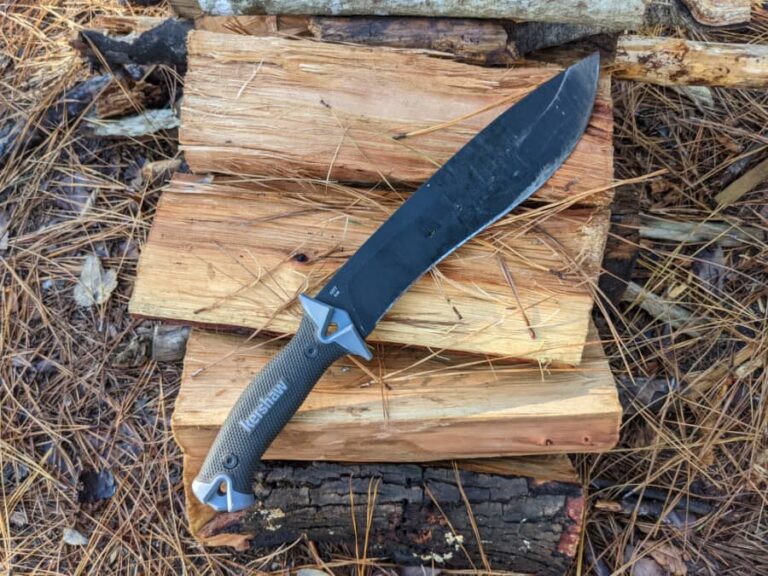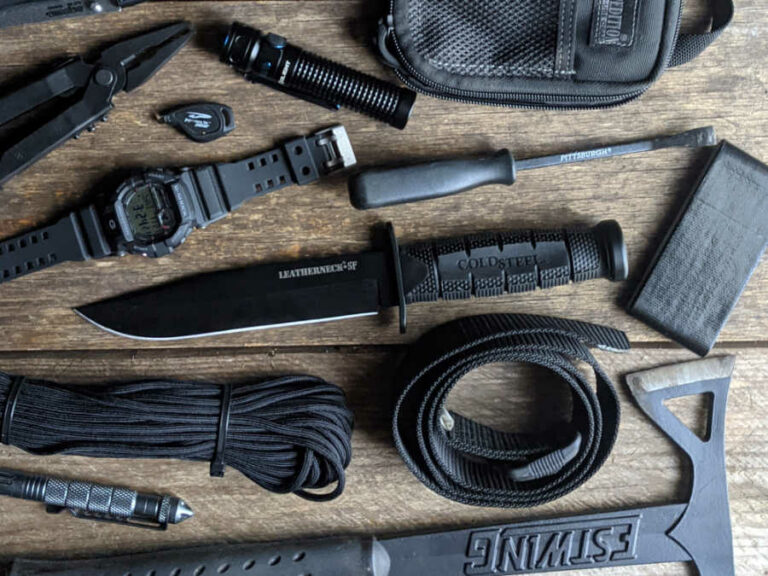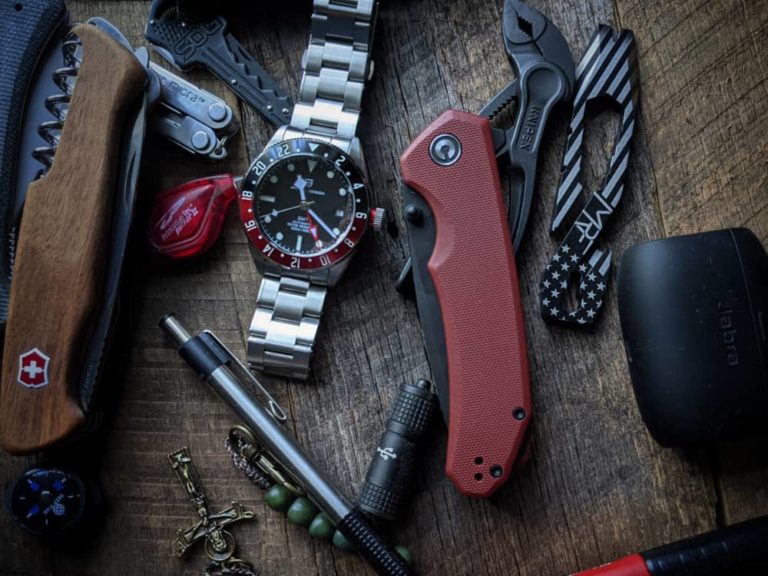Weyland Kukri Machete Review
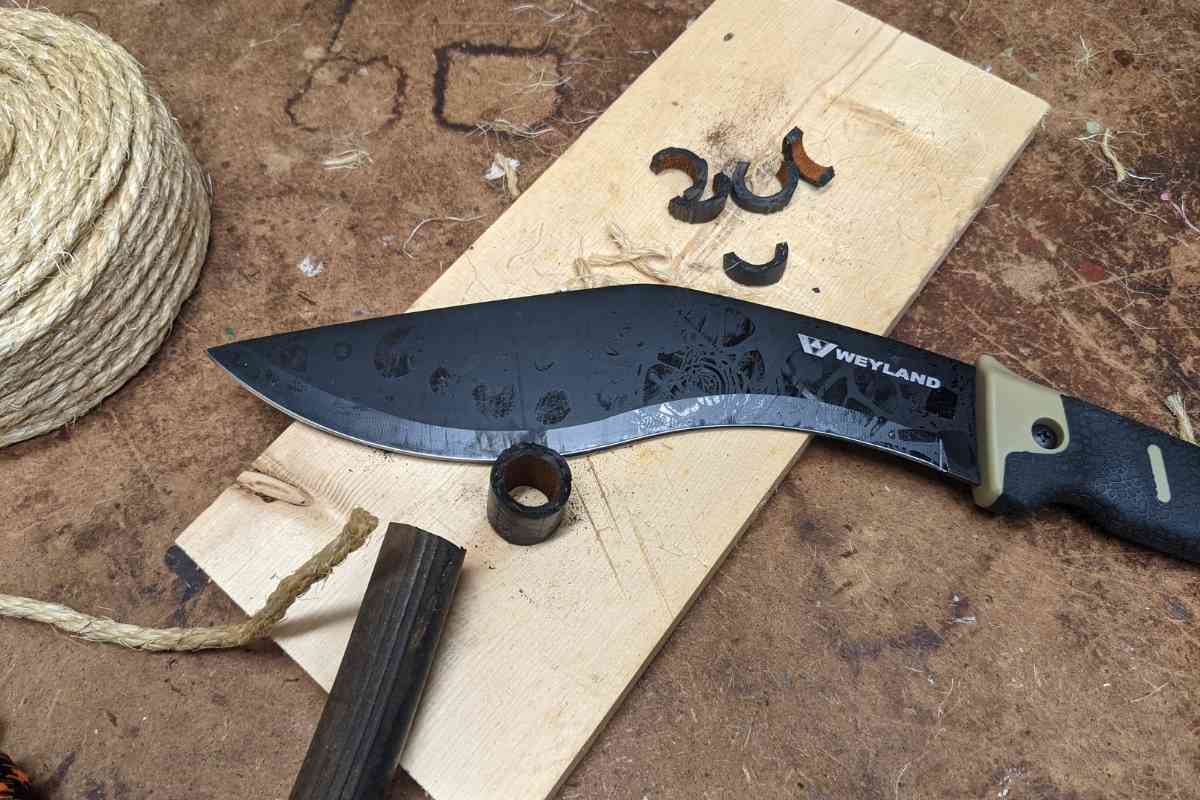
Quick Overview:
First and foremost, the Weyland Kukri Machete looks better in person than it does on Amazon. I bought it on a whim to see what you get for $35 and was blown away. For the money it’s a great performer. It even is better than may kukri I’ve tried that cost twice as much.
Our Recommendation
Pros:
Cons:
Sometimes I’ll decide to buy a product that I have absolutely zero expectations for. Call it an impulse. And then, just occasionally, that product will far exceed the low bar I set for it. I love it when that happens.
Such is the case with the Weyland Kukri Machete, a budget machete from a brand I had very little knowledge of. They’re available on Amazon and at Walmart—not a ringing endorsement, I know—and come with a rock-bottom price tag in the $30 to $35 range.
I bought one thinking it would be a good blade for my kids to learn and practice with. That’s about it. My hopes were not high, but sometimes it’s good to be wrong.
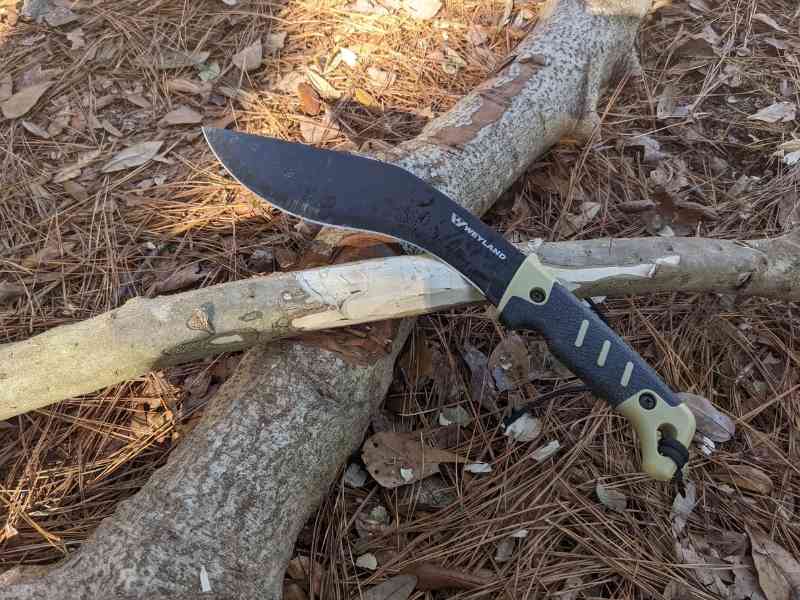
Weyland Kukri Machete: First Impressions
First and foremost, the Weyland Kukri Machete looks better in person than it does on Amazon. Something about the two-tone handle really screams “CHEAP!” in online pictures, but it’s a lot more solid in my hand than I expected. That was pleasant surprise number one.
The blade has a healthy recurve, typical of a kukri, and comes with a handsome black powder-coat finish. It bears more than a passing resemblance to the Kuk from Columbia River Knife & Tool. The handle is comfortable in my hand, and the knife feels well-balanced overall (pleasant surprise number two). It’s also surprisingly light but doesn’t feel flimsy.
Mine came decently sharp right out of the box, though perhaps not quite as sharp as I might have liked. Ultimately, a machete-type blade doesn’t need to be as sharp as, say, a filet knife, but it should be sharp enough to slice through brush and small branches, which the Weyland definitely is.
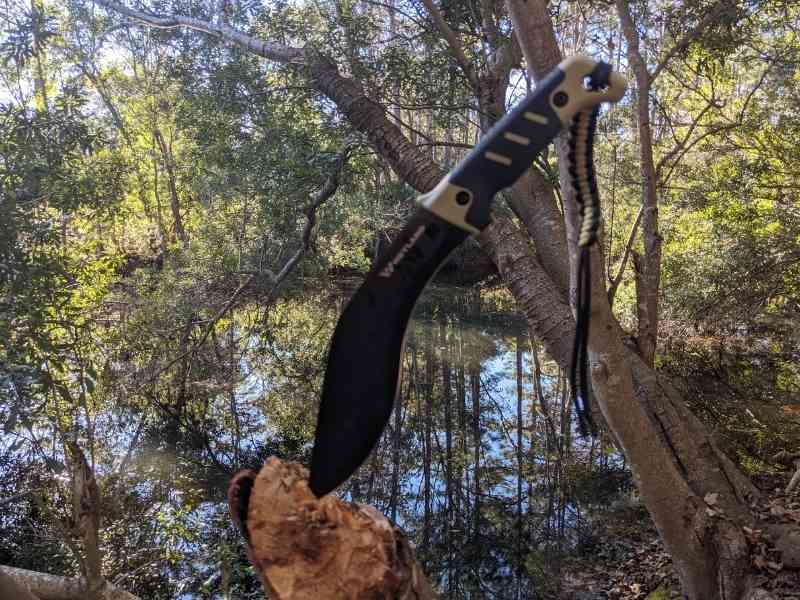
Kukri vs. Machete
Real quick, just for anybody who might be comparing various large knives and wondering which one to pick, let’s define our terms. What is a kukri? How is it different from the machete? Which is better for what?
A true kukri is a traditional Nepalese blade, which was used by Ghurka warriors in the 1800s, but has origins dating back much farther. Kukris were designed to be fierce fighting weapons as well as useful cutting tools. If you were a farmer by day and a warrior by night, you needed one blade that you could use for both.
Kukris have a very distinctive shape, with a deeply recurved cutting edge and usually a curved or angled spine. Some folks consider them to be a type of machete, while others would argue that a kukri and a machete are two different things.
So if you’re looking at the Weyland and wondering which it is, the answer is neither… or both. Kukri-inspired blades have become quite popular in recent years, and the Weyland Kukri Machete is essentially a budget-conscious entry into what has become a very crowded field.
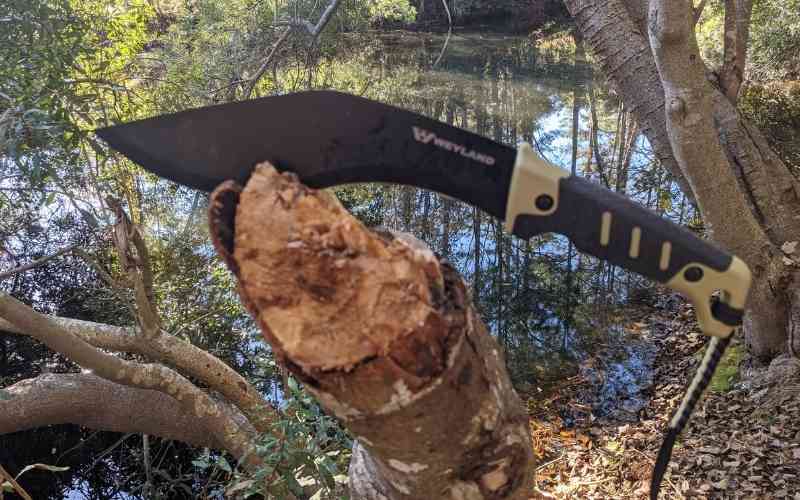
Measurements and Specs
The Weyland Kukri Machete has an overall length of 15.5”, which includes a 10-inch full tang fixed blade. The blade is made out of 65Mn high carbon steel, and the handle is plastic with a rubber grip and a lanyard made of paracord. I don’t know the official blade thickness, but my measurements place it at about 0.12”. It weighs 14 oz.
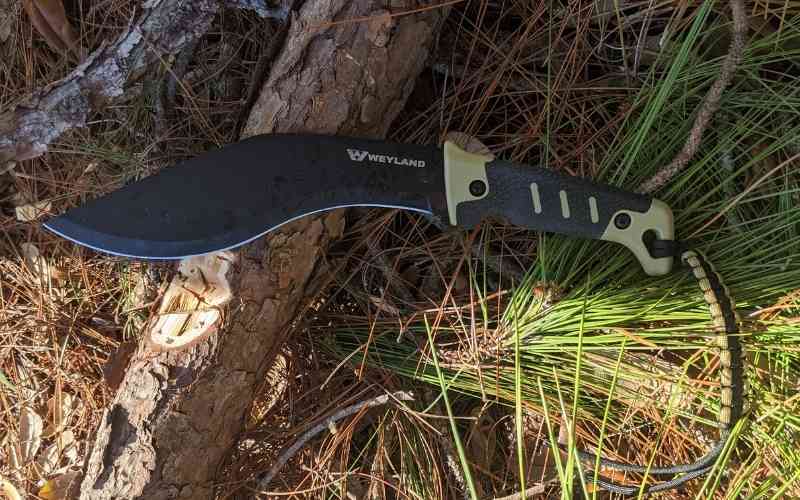
Blade Shape and Steel
The recurve blade is a hallmark of any kukri, and it’s one of the most unmistakable features of the Weyland Kukri Machete. The cutting edge bellies prominently toward the tip, and then has a deeply bowed recurve section closer to the handle. It’s a saber grind with a secondary bevel. The sweeping, S-shaped curvature of the blade makes this an effective slicer as well as a useful knife finer detail work like shaving and whittling.
The steel used to make this blade is 65Mn steel. It’s basically an inexpensive Chinese high carbon steel that’s fairly common in machete-type blades. The CRKT Kuk and the Kershaw Camp 10 are made of the exact same stuff, and both are more expensive knives in a similar size class.
65Mn steel contains Carbon, Chromium, Manganese, and Sulfur, all of which impart various characteristics to the metal. It has a good balance of toughness and flexibility compared to harder carbon steels, which makes it a good steel for a machete. It’s fairly easy to sharpen, but also somewhat lacking in corrosion resistance, so be sure to dry it after use.
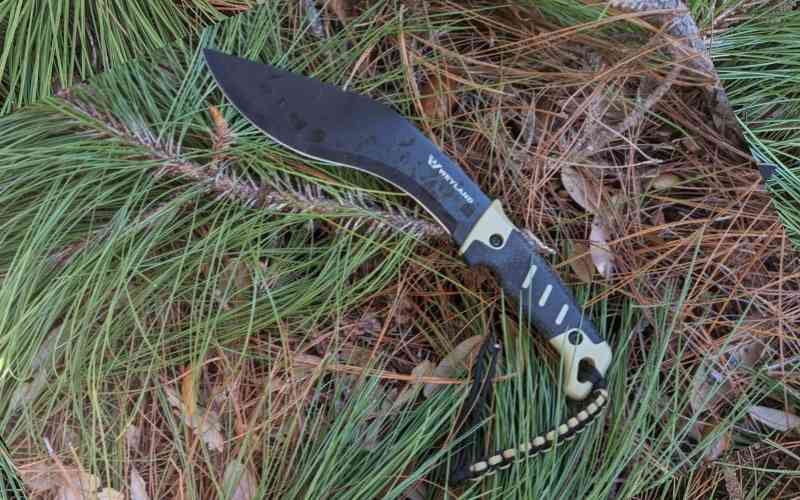
Handle and Sheath
I tend to try to avoid judging any knife too much based on appearance. After all, we’re talking about tools that should be, first and foremost, functional. The handle of the Weyland Kukri Machete is a big part of why I initially took this knife to be essentially an oversized toy. It’s made of a pale-greenish colored plastic with some black rubbery grip, and the whole thing is held together with what looks to be a pair of Phillips-head screws.
It’s not the most confidence-inspiring appearance. But the handle is actually quite sturdy and comfortable in my hand. I don’t detect any hot spots after extended use, and the rubber grips my palm very well, even when I’m a bit sweaty. It even has what amounts to a finger choil and thumb ramp integrated into its shape.
I also love that a length of paracord comes woven into the lanyard hole. I could go on and on about the million uses one can find for paracord in the backcountry, but I’ll spare you. Bottom line: it’s a nice touch.
The sheath that comes with the Weyland Kukri Machete is a pretty basic woven nylon sheath with a pair of straps that snap into place to keep the blade snug and secure inside. Getting the knife in and out of the sheath can be a little awkward if you’re wearing it on your belt, but personally, I don’t typically wear it that way.
One thing that’s really cool is that the sheath has MOLLE webbing, making it easy to attach to any MOLLE-compatible tactical backpack or rucksack. Carrying the Kukri Machete on the outside of one’s pack is a very convenient way to tote it around in the backcountry.
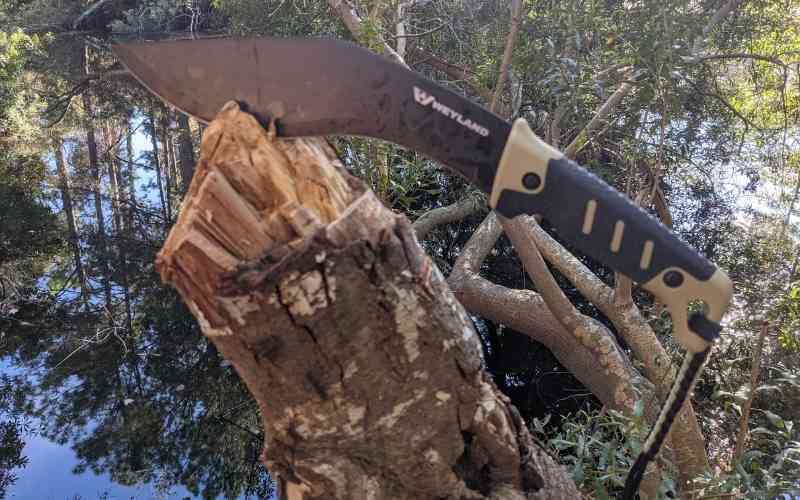
The Weyland Kukri Machete in Action
Different people buy a knife like this for different reasons. Whether you end up choosing the Weyland Kukri Machete over similar blades made by CRKT or Kershaw will depend largely on your intended use.
I’ve found that the Weyland is really good for typical low-impact machete tasks, like clearing brush or blazing a trail through the backcountry. It’s handy for breaking down relatively small branches and limbs, and for shaving tinder and making feather sticks.
I have less confidence in it when it comes to heavy-duty chopping and batoning firewood. I used mine to break down last year’s Christmas tree (a job long overdue) and it handled the soft spruce wood nicely. I wouldn’t use it to split heavy logs. Just for comparison, the Weyland’s blade is about half the thickness of the Kershaw Camp 10, a knife that I’ve tried my best to destroy through overuse but is, apparently, indestructible.
The Weyland Kukri Machete is marketed as a survival tool, which I don’t really think is its strongest suit. I like it much better as a backyard and garden tool, and even as a camping machete.
It’s a well-made knife that holds up very well as long as you don’t subject it to the type of punishment it’s not designed for. And although it has far exceeded my expectations, I still stand by my original presumption that the Weyland Kukri Machete is an ideal blade to let kids learn with when they’re old enough. And the price is definitely right.

Blair Witkowski is an avid watch nut, loves pocket knives and flashlights, and when he is not trying to be a good dad to his nine kids, you will find him running or posting pics on Instagram. Besides writing articles for Tech Writer EDC he is also the founder of Lowcountry Style & Living. In addition to writing, he is focused on improving his client’s websites for his other passion, Search Engine Optimization. His wife Jennifer and he live in coastal South Carolina.

